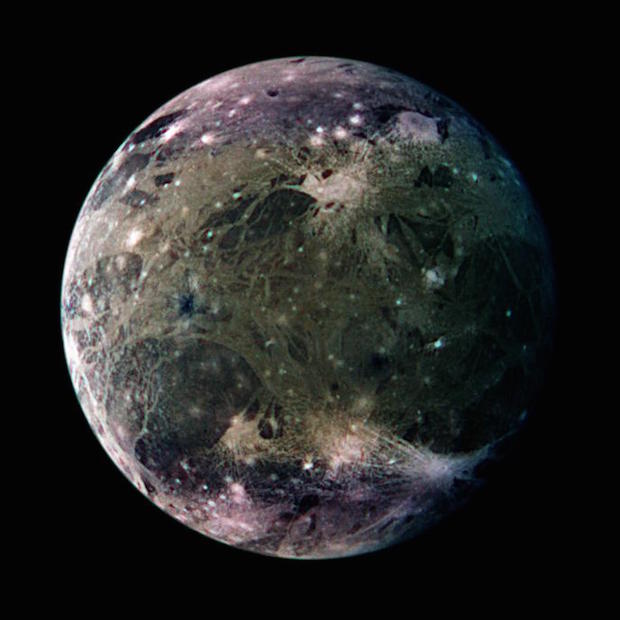
Planet-sized moons orbiting huge gas giants could provide havens for life around other stars, but in order to be habitable these moons would need to be larger and more massive than Mars, according to new research by René Heller and Ralph Pudritz of McMaster University in Canada.
There are 181 currently known moons around planets and dwarf planets in the Solar System (this figure may grow if New Horizons finds more moons around Pluto), but thus far no moon around an exoplanet – a planet orbiting a star other than the Sun – has ever been found. However, astronomers consider it a safe bet that exoplanets will be joined by exomoons and that so far we simply lack the sensitivity to detect them. Just as there are extreme exoplanets several times more massive than Jupiter, astronomers suspect that there could also be moons many times more massive than the moons in our Solar System.
These giant exoplanets are gaseous worlds without a surface and certainly could not bear life as we know it. Their solid moons, however, might potentially be habitable, especially if the planets have migrated inwards towards the habitable zone. This zone is just at the right distance from a star for temperatures to be just right for worlds wrapped in an atmosphere to have liquid water on their surface. In our Solar System Earth resides inside the Sun’s habitable zone, with Venus just beyond the inside edge of the zone and Mars on the outer edge.
In a pair of papers, published respectively in the journals Astronomy and Astrophysics and The Astrophysical Journal, Heller and Pudritz explored what it would take for a moon that has tagged along with its migrating planet to be able to potentially support life.
Chiefly, a moon has to be able to retain its liquid water, and massive moons have two advantages in doing so. One, is that the extra gravity is able to hold onto a water-rich atmosphere better. Two, is that the more massive a moon, the longer it can retain heat in its core to drive an internal dynamo that generates a magnetic field. This heat can be added to by the friction it feels inside from the gravitational tides wielded by its parent gas giant. The magnetic field forms a protective bubble around the moon, called a magnetosphere, deflecting the solar wind and preventing the atmosphere and its water vapour from being stripped away. This is crucial, particularly as in 2013, Heller and Jorge Zuluaga of the University of Antioquia in Colombia discovered that the parent planet’s magnetic field would not extend far enough to protect moons beyond the ice line.
So Heller and Pudritz set about exploring the formation of massive moons, using our own Jupiter and its four Galilean moons as ideal test subjects. They found that, in any moon-forming disc that settles around a growing planet, the point where temperatures drop low enough for water-ice to condense and snow out as solid ice is the crucial factor in controlling the mass of the moons. The reason is that the addition of the ice increases the overall density of the disc beyond the ice line, meaning that more massive moons can form out there. If we look towards Jupiter, its two largest moons – Ganymede and Callisto – both formed beyond the ice line.
Scaling this up to gas giants several times the mass of Jupiter, Heller and Pudritz calculated that it was feasible for ice-rich moons larger than Mars to form beyond the ice line. Then, when gas giants migrate inwards towards their star, the massive icy moons they bring with them warm up, melting the ice – and they would have a lot of ice.

“I’ve been wondering for years now what would happen to those formerly icy moons that take a piggyback ride with their planets to the habitable zone around a Sun-like star,” Heller tells Astronomy Now. “I’d assume they would end up as water worlds, but the persistence of the ocean would crucially depend upon the moon’s surface gravity, which determines whether the moon is capable of holding onto a substantial atmosphere.”
So, had Jupiter migrated further into the inner Solar System than it did, and settled there, Ganymede would have warmed up but would have been incapable of holding onto its water because it is not big enough, despite being larger than Mercury. Heller reckons that moons at least two or three times more massive than Mars would be required.
Furthermore, it is likely that habitable exomoons will only be found around Sun-like stars. Red dwarf stars, which are smaller and cooler but far more common in the Universe, tend not to produce particularly massive gas giant planets. Yet there are still plenty of stars like the Sun and many super gas giants that have migrated inwards. So even if we find a planetary system where a marauding world has barged through and kicked out all the smaller terrestrial planets, we should not rule that system out as a place to look for life. With the next generation of telescopes such as the European Extremely Large Telescope and the Thirty Meter Telescope under planning and construction, and new exoplanet missions such as TESS and PLATO soon to be launched, the exomoons might not be able to hide for much longer.



